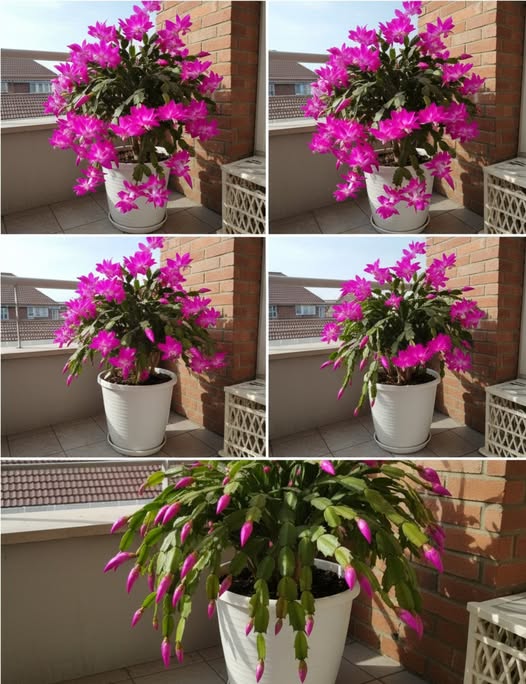Now, let’s move on to preparing the tea solution. As always, I start with well-rested water that has been left to sit for two to three days. To this, I will add one cup of brewed tea (tea sediment or leftover tea works well). Mix it thoroughly to ensure even distribution. Once ready, pour this mixture gently around the base of your plants. You can use a spoon or small ladle to evenly distribute the liquid.
This tea treatment provides incredible benefits to Christmas cacti. I highly recommend trying it at least once! You can also mix the dry tea leaves directly into the soil instead of using the liquid. Either way, this method is highly effective. However, be careful not to apply this treatment when the soil is too dry—water the plant first to keep the soil slightly moist.
Important Watering Tips
Christmas cacti do not tolerate excessive moisture, so avoid overwatering. In the summer, only water them when the soil has dried out completely. During the winter, reduce watering and provide minimal moisture. Today, I will also water my recently planted cuttings to help them establish well.
The Growth Journey of My Plants
Four months ago, I planted one of my Christmas cacti. My long-time followers may remember it from previous videos. My neighbor gave it to me, saying that it had not bloomed for seven years! She was unsure if it would ever produce flowers. However, since I started taking care of it, the plant has grown significantly. I hope to see it bloom in autumn!
Many of my cuttings were gifts from my kind and generous neighbors. They know how much I love plants, so they have given me several varieties of Christmas cacti. In summer, I keep them indoors in a cool area. While they do need some light, they can also thrive in slightly shaded spots. However, avoid placing them in direct sunlight, as too much light can cause stress to the leaves.
Additional Care Tips
Christmas cacti love humidity, so misting their leaves is very beneficial. During the summer, spray them regularly to keep them hydrated. When it rains, take your plants outside to let them absorb natural rainwater—it’s excellent for their growth! If you cannot place them outdoors, you can use a spray bottle to mist their leaves weekly.
In autumn, as temperatures drop, move your plants near a window where they can receive fresh air. The cool breeze will encourage the formation of flower buds at the tips of the leaves. At this stage, misting the leaves is still important to maintain humidity.
LOOK ATE THE NEXT PAGE
ADVERTISEMENT

